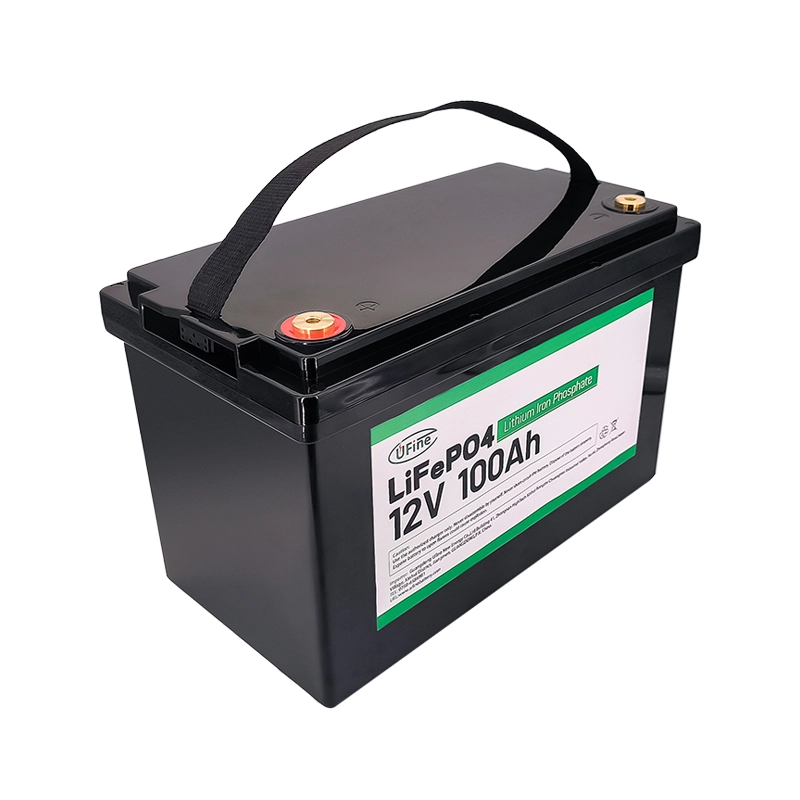
- Part 1. What does it mean to connect 12V batteries in series?
- Part 2. What does it mean to connect 12V batteries in parallel?
- Part 3. Series vs. parallel battery wiring explained
- Part 4. What are the pros and cons of connecting batteries in series?
- Part 5. What are the pros and cons of connecting batteries in parallel?
- Part 6. Which is better: 12V batteries in series or parallel?
- Part 7. How do you wire 12V batteries in series vs. parallel?
- Part 8. How does series vs. parallel wiring affect charging?
- Part 9. How many 12V batteries can you connect in series or parallel?
- Part 10. Common mistakes when wiring 12V batteries
- Part 11. Safety tips for series vs parallel battery wiring
- Part 12. Final word
Part 1. What does it mean to connect 12V batteries in series?
When connecting 12V batteries in series, the positive terminal of one battery is connected to the negative terminal of the next. This configuration increases the overall system voltage while keeping the amp-hour (Ah) capacity the same.
- Example: Two 12V, 100Ah batteries wired in series = 24V, 100Ah.
- Benefit: Higher voltage allows power-hungry equipment to run more efficiently with thinner cabling.
This wiring method is common in applications like electric scooters, golf carts, and some solar systems that require 24V, 36V, or even 48V.
Key takeaway: Wiring 12V batteries in series raises the voltage but does not extend runtime.

12 V 100Ah LiFePO4 Battery 185215340
Ufine 12V, 100Ah LiFePO4 battery provides a reliable power source with stable voltage and long cycle life.
- It’s lightweight compared to traditional lead-acid batteries, yet delivers consistent performance even under high loads.
- With built-in safety and low self-discharge, it’s an ideal choice for solar systems, RVs, and backup applications.
Part 2. What does it mean to connect 12V batteries in parallel?
When connecting 12V batteries in parallel, all positive terminals are linked together, and all negative terminals are connected together. This keeps the voltage the same (12V) but increases the total capacity (Ah).
- Example: Two 12V, 100Ah batteries wired in parallel = 12V, 200Ah.
- Benefit: More stored energy equals longer runtime without changing the system voltage.
This setup is ideal for RVs, boats, or backup power systems where devices are designed to run on 12V but need extended operating time.
Key takeaway: Wiring 12V batteries in parallel increases capacity and runtime, but voltage remains 12V.
Part 3. Series vs. parallel battery wiring explained
Understanding 12V batteries in series vs. parallel is easier when comparing side by side:
| Feature | Series Wiring | Parallel Wiring |
|---|---|---|
| Voltage | Adds up (2× 12V = 24V) | Stays the same (12V) |
| Capacity (Ah) | Stays the same | Adds up (100Ah + 100Ah = 200Ah) |
| Runtime | Unchanged | Extended |
| Application | High-voltage systems (24V, 36V, 48V) | Long runtimes at 12V |
- Series = higher voltage, same runtime
- Parallel = same voltage, longer runtime
This distinction forms the basis of nearly every discussion about connecting 12V batteries in series vs. parallel.
Part 4. What are the pros and cons of connecting batteries in series?
Pros of 12V Batteries in Series:
- Provides higher system voltage (24V, 36V, or 48V).
- Lower current required for the same power output (P = V × I), which reduces cable thickness and energy losses.
- Often more efficient for powering motors, inverters, and heavy equipment.
Cons of 12V Batteries in Series:
- If one battery fails, the entire string is compromised.
- Batteries must be closely matched in age, type, and charge state.
- Charging requires a charger designed for the higher system voltage (e.g., a 24V charger for two 12V batteries in series).
Best use case: When higher voltage is required for inverters, motors, or industrial systems.
Part 5. What are the pros and cons of connecting batteries in parallel?
Pros of 12V Batteries in Parallel:
- Increases amp-hour capacity and extends runtime.
- Keeps the system voltage at 12V, compatible with common appliances and electronics.
- Offers redundancy — if one battery weakens, others can still support the load.
- Easier to expand by adding more batteries.
Cons of 12V Batteries in Parallel:
- Higher current flow requires thicker cables.
- Risk of uneven charging/discharging if batteries aren’t perfectly balanced.
- Paralleled batteries can “fight” each other if internal resistances differ, leading to inefficiency.
Best use case: For applications requiring long runtimes at standard 12V, such as RVs, boats, and backup systems.
Part 6. Which is better: 12V batteries in series or parallel?
The answer depends entirely on your system requirements.
- Choose series wiring if your equipment, inverter, or motor demands higher voltage (24V, 36V, or 48V).
- Choose parallel wiring if you need to extend runtime at 12V without changing the voltage.
For example:
- RVs and boats: Often benefit from parallel setups for longer 12V runtime.
- Solar and off-grid homes: May use series wiring to match inverter requirements (e.g., 24V or 48V).
- Electric vehicles or golf carts: Usually wired in series to achieve the required voltage for motors.
Part 7. How do you wire 12V batteries in series vs. parallel?
Wiring 12V Batteries in Series:
- Connect the positive terminal of the first battery to the negative terminal of the second.
- Use the remaining free positive and negative terminals as the main output to your system.
Wiring 12V Batteries in Parallel:
- Connect the positive terminals together using proper gauge cable.
- Connect the negative terminals together.
- Use either positive and negative as the system output.
Safety tips for wiring 12V batteries:
- Always use cables rated for the expected current.
- Double-check polarity before connecting to avoid shorts.
- Install fuses or circuit breakers for added protection.
Part 8. How does series vs. parallel wiring affect charging?
Charging is often overlooked, yet it’s one of the most important considerations when deciding between 12V batteries in series vs. parallel.
- Series wiring: A higher-voltage charger is required (e.g., a 24V charger for two 12V batteries in series). All batteries charge equally if they are matched.
- Parallel wiring: A single 12V charger can charge the entire bank, but current is split across all batteries. Unequal battery health can lead to imbalance.
Note: Important note: Never attempt to charge batteries in a mixed series-parallel configuration unless the charger is specifically designed for it.
Part 9. How many 12V batteries can you connect in series or parallel?
The number of batteries you can safely connect depends on your system design:
- In series: Each added battery increases system voltage. For example, four 12V batteries in series = 48V. Beyond this, specialized equipment is required.
- In parallel: You can connect multiple batteries, but it’s recommended to limit to 3–4 in a parallel bank unless using advanced battery management systems (BMS).
Best practice: Always use identical batteries (same brand, type, capacity, and age) to ensure balanced performance.
Part 10. Common mistakes when wiring 12V batteries
Many issues with battery banks come from simple errors.
- Mixing new and old batteries: Causes imbalance and reduces overall life.
- Incorrect polarity: Can cause short circuits, sparks, and permanent damage.
- Mismatched capacity or type: A lithium and a lead-acid battery should never be wired together.
- Ignoring cable size: Using undersized cables in parallel setups can cause overheating.
Avoiding these mistakes helps maximize both safety and performance in 12V series vs. parallel battery systems.
Part 11. Safety tips for series vs parallel battery wiring
Safety must always come first when dealing with electrical systems.
- Wear protective gear (gloves, goggles).
- Ensure proper ventilation, especially for lead-acid batteries.
- Use insulated tools to avoid accidental shorts.
- Install fuses or breakers between batteries and loads.
- Regularly inspect connections for corrosion or looseness.
Following these guidelines reduces the risk of accidents and extends battery life.
Part 12. Final word
Understanding the difference between 12V batteries in series vs. parallel is essential for anyone working with off-grid systems, RVs, boats, or renewable energy storage.
- Series wiring boosts system voltage without changing capacity, making it ideal for high-voltage applications.
- Parallel wiring increases capacity and runtime at the same 12V, perfect for long-lasting 12V power systems.
By carefully matching your system’s voltage and capacity requirements with the right configuration, you’ll ensure optimal performance, safer operation, and longer battery life.
Related Tags:
More Articles

How Long Can a 12V 5Ah Battery Power Devices?
Wondering how long a 12V 5Ah battery lasts? Find out the details now and optimize your usage. Get the info you need today!
Is It Bad to Fully Discharge a Lithium Ion Battery?
Discover what happens if a lithium battery is fully discharged and how to safely recharge 12V batteries to prevent permanent damage.
Does a Higher mAh Battery Last Longer?
Does a higher mAh battery really last longer? Learn what mAh means, real battery life in hours, replacement safety (4000 vs 5000mAh), and real examples.
Exploring the Lithium Ion Battery Fire Temperature
Discover the lithium-ion battery fire temperature and learn how to stay safe. Get essential tips to prevent battery fires and protect your devices today.
The Ultimate Guide to 6s Lipo Batteries
A beginner-friendly guide to 6S LiPo batteries. Understand voltage, capacity, charging tips, safety rules, and real-world applications.



